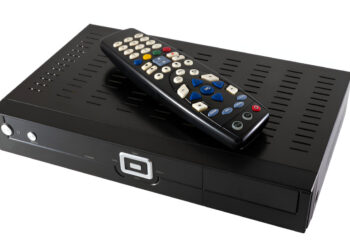Significant risks can arise due to dust during the production and processing of food products. Explosive dust is produced by combustible dust particles that are dispersed frequently, endangering the health of workers.
This raises the importance of dust collectors in the food industry. Properly installed and maintained dust collectors will help keep the food and employees safe from airborne particulates, preventing respiratory issues and other health problems.
Airborne dust can be captured and filtered to stop it from adhering to surfaces. This will considerably lessen the amount of maintenance required and prevent the risk of cross-contamination.
The facility receives clean air that has been filtered out of particulates with the use of dust collectors. To ensure a safe operation in the food industry here are 10 tips for dust collection safety:
- Ensure that the dust collector is appropriate in size and function
There isn’t a universal filtration system for all food processing facilities because of the difference in the equipment and substances they use.
Designers must carefully consider the type of dust collector to employ, how to size it, and where to install it. Cartridge dust collectors are now the preferred type for the majority of applications in the food sector.
- Be cautious of explosions or other safety issues
The dust collector should have a flame propagation package that complies with safety requirements since most food dust is incendiary. These systems are intended to lessen facility damage in the event of an explosion inside the collector.
They frequently incorporate explosive venting, isolation valves, and rotary airlocks between the filtering chamber and collection bin. Understanding what causes a safety hazard and taking proactive steps to avoid it are the best ways to prevent them.
- Pick the right filter for your food processes
A measure of a filter’s capacity to trap particles of various sizes, the minimum efficiency reporting value ratings (MERV) is assigned to dust collector cartridge filters.
A filter’s capacity to catch tiny particulates is categorized through its rating. Considering the features and size of the dust should help in choosing the right type of filter.
- Change filters regularly
Filters should be changed regularly to improve efficiency and safety. Dust in the air is reduced using collection barrels and bag-in/bag-out techniques.
- Keep the dust collector away from possible heat sources or combustible materials
Eliminating ignition sources will help reduce danger. Sparks, open flames, and static energy can cause ignition. These sources can be ignited by friction and machinery. Eliminate them from your work area or reduce heat or static creation.
- Check for dust build-up or blockages in storage facilities regularly
Work is slowed down due to obstructions in silos and other storage facilities. Workers who manually clear the dust are also put in danger. Invest in machinery that can empty silos from dust without requiring workers to enter the facility.
- Establish a regular maintenance schedule and stick to it
Proper maintenance is essential in keeping dust collectors in peak condition. Ensure that all dust collectors are still installed properly and always check for wear and tear. Poorly installed dust collectors can be a safety hazard or lead to increased dust levels in the work area.
It is advisable to engage with a safety consultant from London or a dust collection expert. They are knowledgeable and experienced in air filtration and ventilation systems to help you with their proper maintenance.
- Run laboratory tests
Through testing, you can assess the danger levels for various parts of your food facility. If you don’t know the combustibility of the powders being utilized, you should conduct explosive screenings throughout your plant.
For some compounds, the Kst-value is also required. With this knowledge, you can better draft a containment and suppression plan appropriate for your operation.
- Use source capture to safeguard your workers
Inhaling organic dust puts workers at your facility at risk for health problems. To protect your staff, use source capture systems.
Ventilation hoods prevent environmental pollution by drawing contaminants away and through a filter. This will help prevent employees from contacting their Whitby injury lawyers for health issues.
- Incorporate safety in designing your workspace
Make sure the layout of your operational space is designed with safety in mind. Aim for the highest levels of efficiency and safety for your food processing operations. For example, equipment that generates heat or has a heated surface should be positioned far from equipment that generates dust. This will keep your workplace safe and help you avoid explosions.
Dust collectors are an essential part of the food industry and, when used properly, can help keep employees safe from airborne particulates. Although there isn’t a single dust-collecting method that suits all businesses, learning about dust control safety and its fundamentals will help your food production business operates safely and more efficiently.



